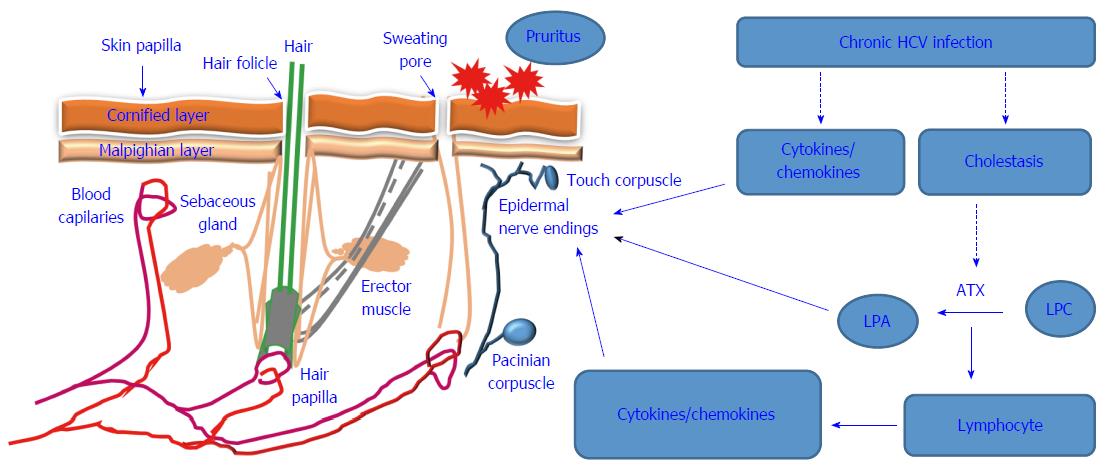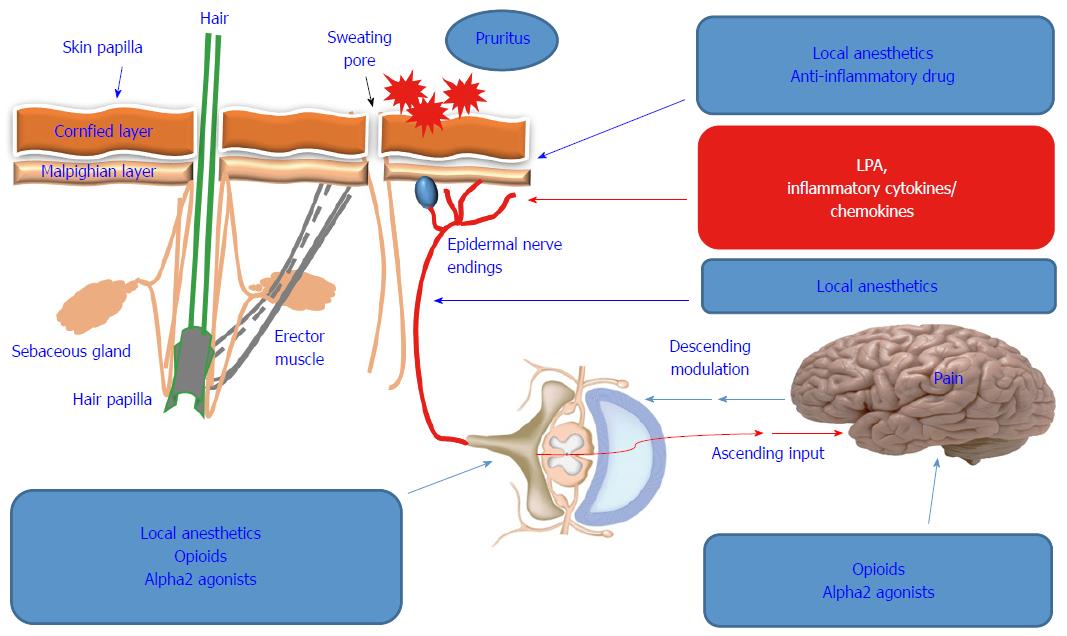Copyright
©The Author(s) 2017.
World J Gastroenterol. Feb 7, 2017; 23(5): 743-750
Published online Feb 7, 2017. doi: 10.3748/wjg.v23.i5.743
Published online Feb 7, 2017. doi: 10.3748/wjg.v23.i5.743
Figure 1 Proposed model for hepatitis C virus-induced pruritus.
Chronic hepatitis C virus (HCV) infection can cause pruritus symptom by both direct and indirect mechanisms. The direct mechanisms include induction of pro-inflammatory cytokines and chemokines during the course of the chronic HCV infection. While the indirect mechanisms are associated with HCV-induced cholestasis leading to the accumulation of autotaxin (ATX) that is responsible for the conversion of the lysophosphatidic choline (LPC) into lysophosphatidic acid (LPA) that, in turn stimulates the epidermal nerve ending leading to the occurrence of pruritus symptom. Also, accumulated LPA can promotes the activation of lymphocytes for the production of pro-inflammatory cytokines and chemokines that, in turn stimulates the epidermal nerve ending leading the occurrence of pruritus symptom.
Figure 2 Overview of the treatment options of hepatitis C virus-associated pruritus.
Once the underlying factors [elevated concentration of lysophosphatidic acid (LPA), pro-inflammatory cytokines, chemokines] causing pruritus have been determined, the treatment strategy can be based on the reduction of the pain or neutralization of the elevated concentration of LPA, pro-inflammatory cytokines and chemokines using local anesthetics, anti-inflammatory drug, Opioids or alpha2 agonists.
- Citation: Alhmada Y, Selimovic D, Murad F, Hassan SL, Haikel Y, Megahed M, Hannig M, Hassan M. Hepatitis C virus-associated pruritus: Etiopathogenesis and therapeutic strategies. World J Gastroenterol 2017; 23(5): 743-750
- URL: https://www.wjgnet.com/1007-9327/full/v23/i5/743.htm
- DOI: https://dx.doi.org/10.3748/wjg.v23.i5.743










